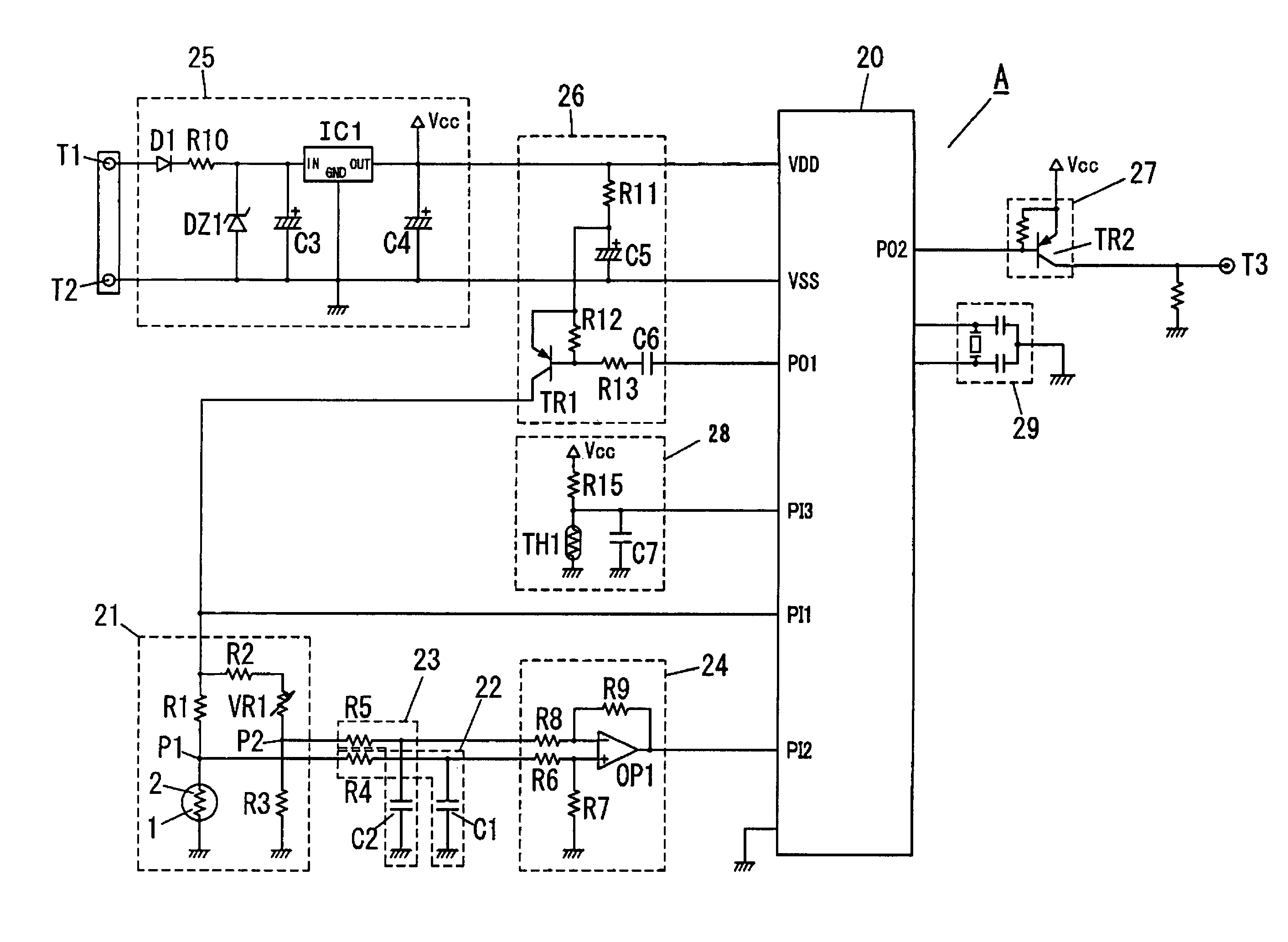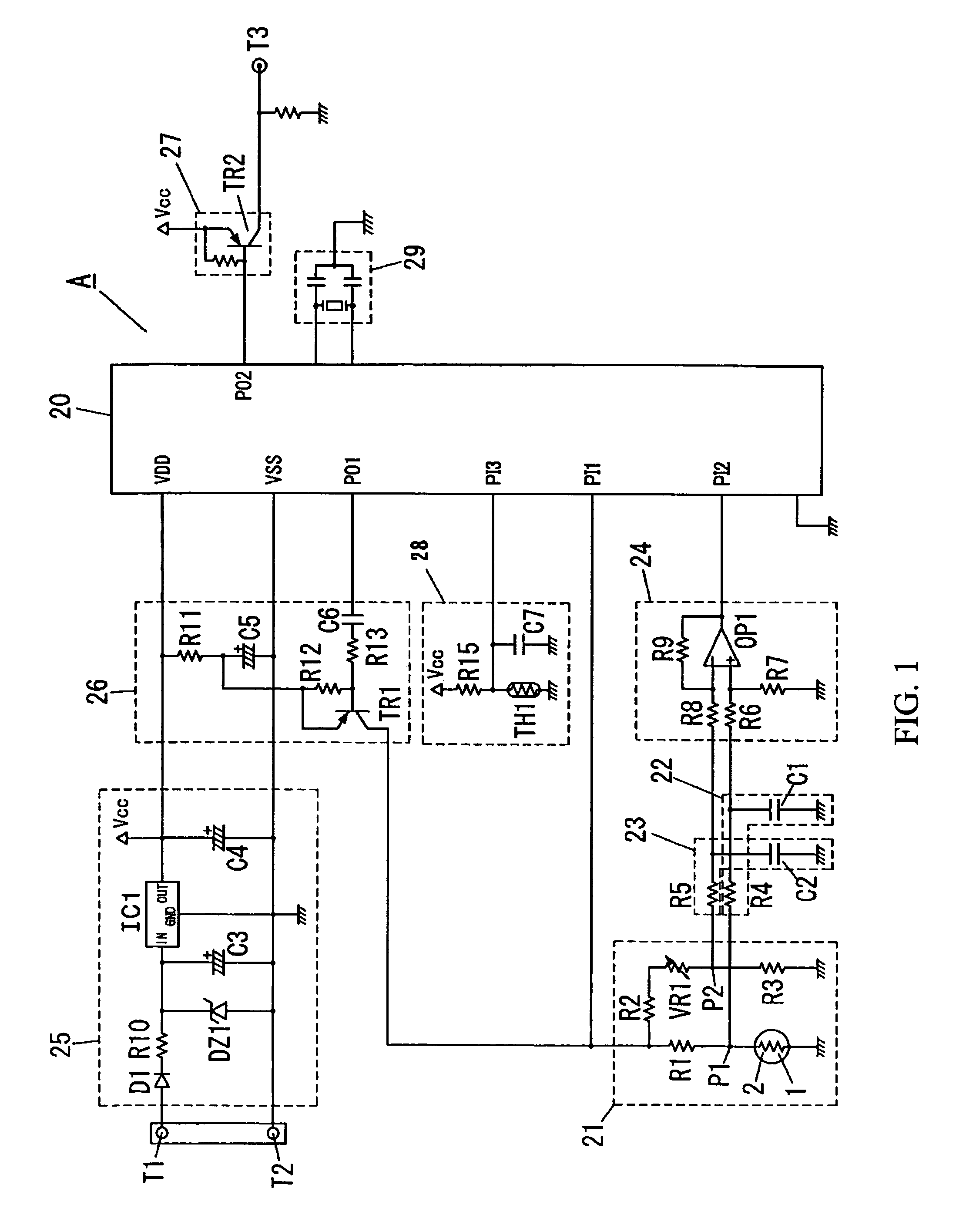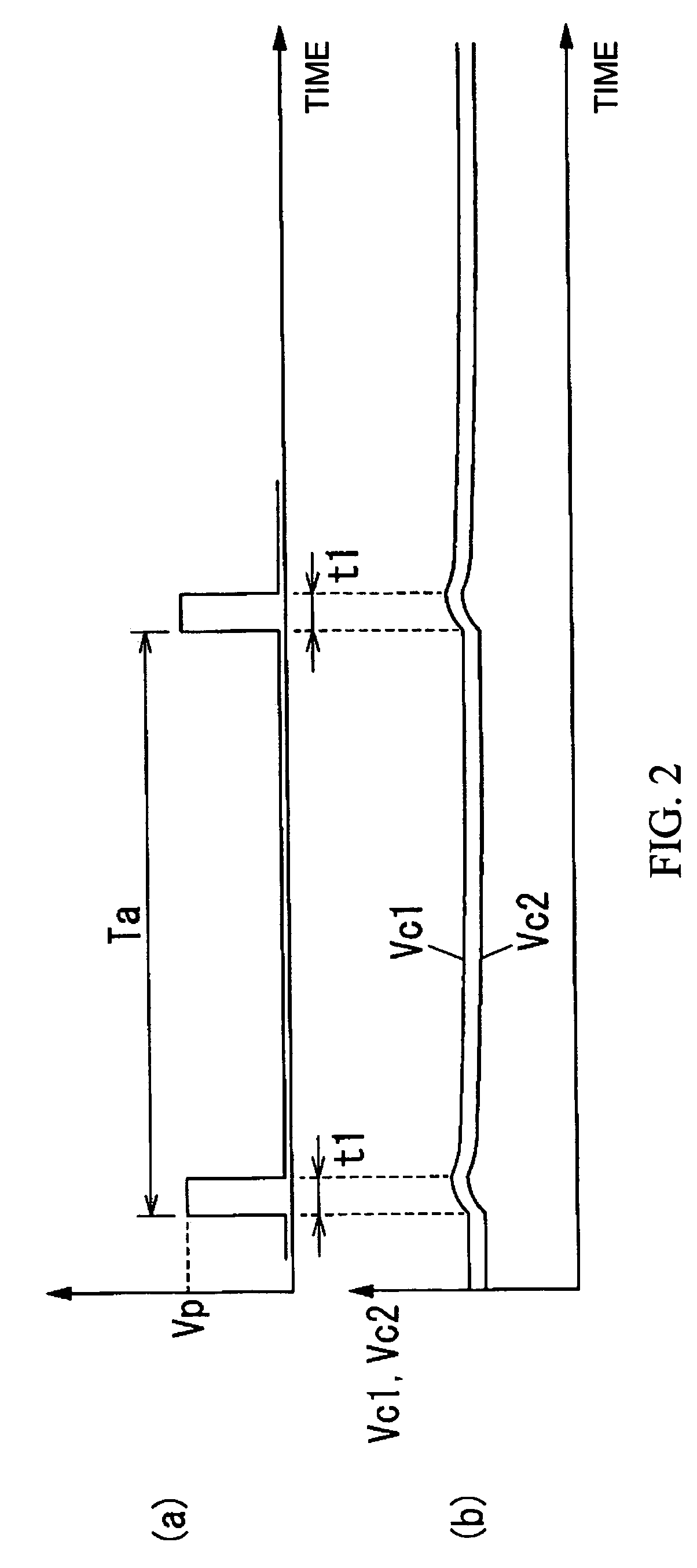Gas detection apparatus
a technology of gas detection apparatus and detection chamber, which is applied in the direction of instruments, chemical methods analysis, suspensions, etc., can solve the problems of expensive amplifiers with a rapid response rate, and achieve the effect of reducing electrical power consumption
- Summary
- Abstract
- Description
- Claims
- Application Information
AI Technical Summary
Benefits of technology
Problems solved by technology
Method used
Image
Examples
first embodiment
[0024]FIG. 3(a) and 3(b) are respectively a cross-sectional view and an external perspective view of a gas sensor 1 used in the gas detection apparatus of the present embodiment. This gas sensor 1 comprises a heating resistor 2, lead terminals 3a and 3b, and a sensor receptacle 4 composed of a base 5 and a protective cap 8.
[0025]The heating resistor 2 is configured to act as both an igniter and a detection resistor. The igniter ignites a flammable gas (for example, hydrogen gas in the present embodiment) adsorbed on a surface thereof by a catalytic action. The detection resistor heats the igniter up to a temperature of 80° C. to 450° C. by Joule heat generated by application of an electric current therethrough when a flammable gas is not ignited on the surface of the igniter.(i.e. in the absence of the temperature rise due to catalytic combustion). The detection resistor changes its resistance in response to a temperature rise by combustion heat generated by the catalytic combustion...
second embodiment
[0049]Hereafter, a second embodiment of the present invention is described based on FIG. 5. In contrast to the abovementioned first embodiment where the load resistor R1 is connected in series with the gas sensor 1, the present embodiment utilizes a reference resistor Rref, instead of the load resistor R1. The reference resistor Rref is formed to the same shape and dimensions from the same material as the heating resistor 2, and designed to be deactivated by the flammable gas. The present configuration in this embodiment is consistent with that of first embodiment, except for the reference resistor Rref. Like parts are designated by like reference numerals, and no duplicate explanation deemed necessary.
[0050]The reference resistor Rref is connected in series with the gas sensor 1 so as to form one arm of the Wheatstone bridge circuit 21 in the present embodiment. In this embodiment, the reference resistor Rref is formed to the same shape and dimensions from the same material as the ...
PUM
| Property | Measurement | Unit |
|---|---|---|
| voltage | aaaaa | aaaaa |
| circuit voltage | aaaaa | aaaaa |
| circuit voltage | aaaaa | aaaaa |
Abstract
Description
Claims
Application Information
 Login to View More
Login to View More - R&D
- Intellectual Property
- Life Sciences
- Materials
- Tech Scout
- Unparalleled Data Quality
- Higher Quality Content
- 60% Fewer Hallucinations
Browse by: Latest US Patents, China's latest patents, Technical Efficacy Thesaurus, Application Domain, Technology Topic, Popular Technical Reports.
© 2025 PatSnap. All rights reserved.Legal|Privacy policy|Modern Slavery Act Transparency Statement|Sitemap|About US| Contact US: help@patsnap.com



